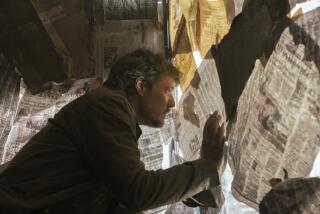‘Twilight Zone’ revisits imagination
- Share via
“The Twilight Zone” was a dimension of imagination so rich that now, 40 years later, it still inspires storytelling -- even when it’s just being revisited.
For proof, look no further than the series’ latest incarnation and, in specific, tonight’s installment at 9 on UPN. Suspense, drama, social commentary -- they’re all improbably present in two half-hour segments hosted by Forest Whitaker. Why improbably? Because they amount to little more than a sequel and a remake.
The first vignette is based on an episode from Nov. 3, 1961, called “It’s a Good Life” and starring the pre-”Lost in Space” Bill Mumy as spoiled 6-year-old Anthony Fremont. Anthony always got his way, seeing as he could read minds, create beasts such as a three-headed gopher and make uncooperative townsfolk disappear by sending them to “the cornfield.”
Now Anthony is grown up and has a 6-year-old daughter, Audrey. Still firmly in control, Anthony long ago shucked aside his wife, his father and countless others, yet somehow his mother (Cloris Leachman) and several more people have survived. Things get complicated, though, when Audrey learns she has her own powers.
Fortunately, writer Ira Steven Behr and director Allan Kroeker put a lot more creativity into “It’s Still a Good Life” than into the title. There’s also fine acting from Mumy and Leachman, who reprise their roles from the original, and from Mumy’s real-life daughter, Liliana, as Audrey.
The second vignette, “Monsters on Maple Street,” is an update of “The Monsters Are Due on Maple Street,” which originally aired March 4, 1960. In the remake, the post-”Pretty in Pink” Andrew McCarthy plays a suburbanite who tries to calm his neighbors after their street is cut off from the outside world. Despite his efforts, they become an angry mob, convinced that they are the victims of a terrorist plot, and they focus their suspicion on mysterious newcomers.
Unlike Rod Serling’s masterpieces, which often were essentially filmed plays, the new series draws on elaborate effects and background music. Whether they’re necessary is debatable. But amid all the disposable “reality” shows and more substantial programs striving for realism, it’s refreshing to see something that isn’t afraid to be flat-out fiction.
More to Read
The complete guide to home viewing
Get Screen Gab for everything about the TV shows and streaming movies everyone’s talking about.
You may occasionally receive promotional content from the Los Angeles Times.






